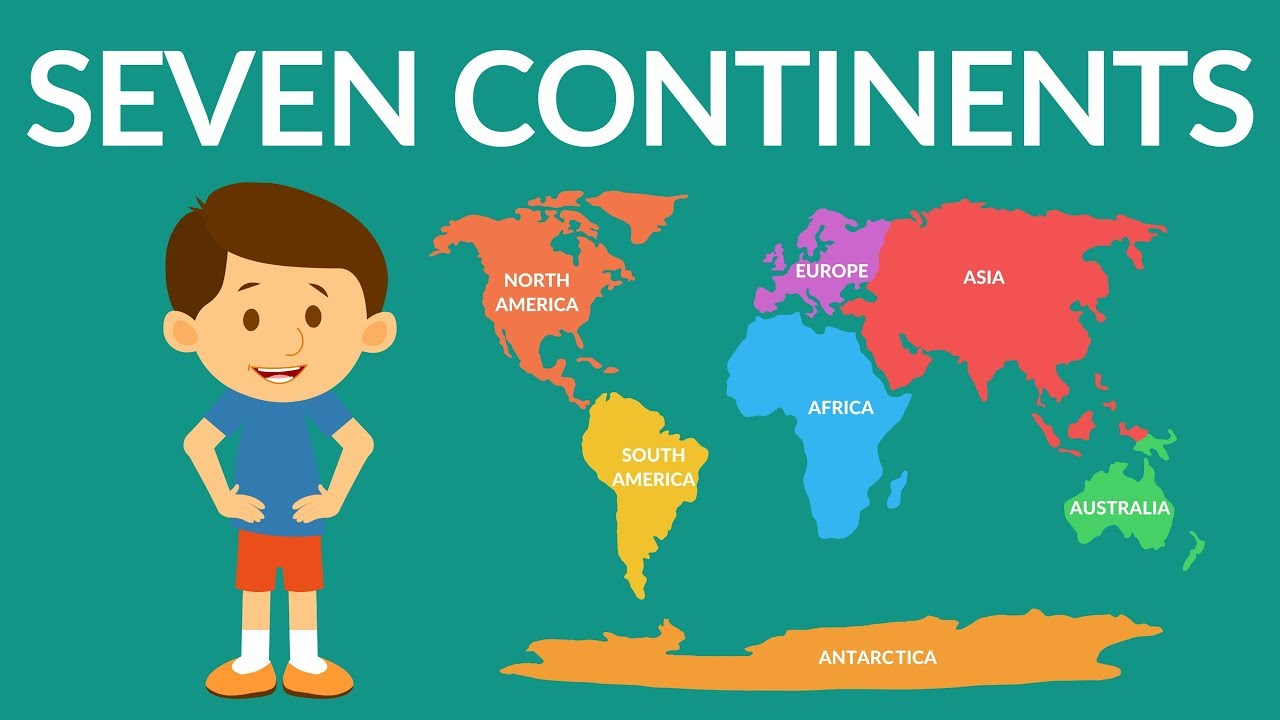The Earth is divided into seven continents large landmasses known as continents, each with unique geographical features, cultures, ecosystems, and histories. These continents are the foundation of our world’s geography. Let's explore each one.
1. Africa
Africa is the second-largest continent, covering about 30.3 million square kilometers (11.7 million square miles). Known as the "Cradle of Humankind," Africa is rich in history, having some of the earliest human fossils ever discovered. It is home to a vast range of ecosystems, from the Sahara Desert to the Congo rainforest and the savannas of the Serengeti. Africa also has immense cultural diversity, with over 1,500 languages spoken across its 54 countries. Interesting Facts:- The Nile River, the longest in the world, flows through Africa.
- Africa has the most number of countries among all continents.
2. Asia
Asia is the largest and most populous continent, covering about 44.6 million square kilometers (17.2 million square miles) and housing around 60% of the global population. It is incredibly diverse, with landscapes ranging from the mountains of the Himalayas to the deserts of the Middle East and the tropical rainforests of Southeast Asia. Asia is also the birthplace of many of the world’s major religions, including Buddhism, Islam, Hinduism, and Confucianism. Interesting Facts:- Asia is home to the highest point on Earth: Mount Everest.
- The continent includes countries with some of the largest economies, such as China, India, and Japan.
3. Europe
Europe, covering around 10.18 million square kilometers (3.93 million square miles), is the third smallest continent but has had an outsized impact on world history. It has been the center of many pivotal events, such as the Renaissance, the Industrial Revolution, and the two World Wars. Despite its small size, Europe is incredibly diverse in terms of languages, cultures, and political systems. Interesting Facts:- Europe has over 44 countries, and the European Union is a major political and economic force.
- The Ural Mountains in Russia mark the traditional boundary between Europe and Asia.
4. North America
North America spans approximately 24.71 million square kilometers (9.54 million square miles) and is the third-largest continent. It includes three major countries: the United States, Canada, and Mexico, as well as Central American countries and the Caribbean islands. North America boasts a wide range of climates, from the Arctic regions of northern Canada to the tropical areas in the Caribbean. Interesting Facts:- North America is home to the Great Lakes, the largest group of freshwater lakes in the world.
- The continent has some of the largest metropolises, including New York City, Los Angeles, and Mexico City.
5. South America
South America, covering 17.84 million square kilometers (6.89 million square miles), is known for its stunning natural landscapes, such as the Amazon rainforest, the Andes mountains, and the Atacama Desert. The continent has 12 sovereign countries and is rich in biodiversity, hosting some of the most diverse ecosystems on the planet. Interesting Facts:- The Amazon River is the largest by discharge and the second-longest river in the world.
- Brazil, the largest country in South America, covers nearly half of the continent’s area.
6. Australia (Oceania)
Australia is both a country and a continent, although the broader term "Oceania" is often used to include the surrounding islands in the Pacific Ocean. Covering about 8.6 million square kilometers (3.3 million square miles), it is the smallest continent. Australia is known for its unique wildlife, like kangaroos and koalas, as well as its vast outback and coral reefs. Oceania includes other island nations like New Zealand, Papua New Guinea, and Fiji. Interesting Facts:- The Great Barrier Reef, located off the coast of Australia, is the largest coral reef system in the world.
- Australia has one of the oldest continuous cultures, with Aboriginal Australians having lived on the continent for over 65,000 years.
7. Antarctica
Antarctica is the coldest, driest, and windiest continent, located at the southernmost part of the Earth. Covering approximately 14 million square kilometers (5.4 million square miles), it is almost entirely covered by ice. No permanent residents live on the continent, but thousands of scientists from various countries conduct research there. Interesting Facts:- Antarctica is home to 70% of the world’s fresh water, locked in its ice sheets.
- Despite its harsh conditions, it supports a variety of wildlife, such as penguins, seals, and whales.
Conclusion
The seven continents represent the vast diversity of our planet, from the bustling cities of Asia and Europe to the untouched wilderness of Antarctica. Each has its own distinct landscapes, cultures, and histories that contribute to the rich tapestry of life on Earth. Understanding these continents helps us appreciate the complexities of our world.Read more :
1= https://bulkdrchecker.com/blogs/what-are-the-worst-side-effects-of-losartan/
2= https://bulkdrchecker.com/blogs/what-are-the-three-credit-reporting-agencies/
3= https://bulkdrchecker.com/blogs/what-are-the-three-components-of-a-nucleotide/
4= https://bulkdrchecker.com/blogs/what-are-the-the-seven-continents/
5= https://bulkdrchecker.com/blogs/what-are-the-primary-colors/

